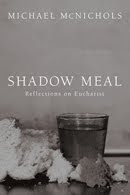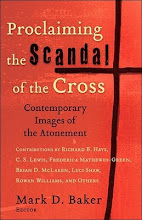
I have been reading Mark Noll’s very helpful book, The New Shape of World Christianity. As he describes the character of the global Christian church as decreasingly European and North American, and increasingly African, Asian, and Latin American, he asks the question, “How much are the supernatural events that fill the pages of Scripture to be considered normative examples for what happens right now?” (p. 36) This is a question that is often answered differently in places like Africa than in Europe or the US.
Theology in the western world often remains abstract. For example, people still argue (to a lesser degree than in the 1980s) about the “inerrancy” of the Bible. People who stand for use of that word in relation to Scripture are seen by their detractors as narrow in their thinking, while those on the other side are often characterized as having a low view of Scripture.
But the debate isn’t typically about whether or not Scripture is authoritative; it’s about what language best describes that authority. The problem with our use of language is that it can only approximate reality and can allow us to remain abstract in our thinking.
When the view of inerrancy is examined, it is usually a claim that only the original manuscripts of the Bible are inerrant—without any errors regarding theology, distances between cities, number of soldiers on the battlefield, and so on. Most people recognize that the ancient manuscripts we have today show variances in them, so the focus is only on the original documents—the ones with the fingerprints of Moses, Isaiah, Matthew, John, Paul and all their friends on them.
Except that we don’t have those documents.
So “inerrancy” can remain only a theory. It is not possible to verify the claim. Yet, most of us still believe in the authority and inspiration of the biblical texts. Some of us just don’t think that “inerrancy” is the right word to describe the character of those texts.
But we can get really tangled up in the abstractness of the conversation, separating ourselves into camps based on theory, debating about the character of Scripture and missing something that our brothers and sisters in other parts of the world seem to grasp: That Scripture tells a story that is living, and we live today in the ongoing reality of that story. The language that describes that story doesn’t alter its character or its effect.
And many of our non-western friends claim that supernatural occurrences still happen—things like healings, exorcisms, the raising of the dead, and so on. For them, the Scriptures are not, for the most part, abstract at all. Noll comments,
“With only some hyperbole, we might say that although some of the world’s new Christian communities are Roman Catholic, some Anglican, some Baptist, some Presbyterian and many independent, almost all are Pentecostal in a broad sense of the term.” (p. 34)
Pentecostal and Charismatic folks in our culture have also made claims about the ongoing activities of the supernatural world, but in our theological work most of us can stay in the world of theories—whether about the nature of Scripture, proper images of the Atonement, creation and science, etc.—and never move into the work and activity of God in the world. Our brothers and sisters in the south and east haven’t separated theory from purposeful practice.
The rest of us have a lot to learn from them.























No comments:
Post a Comment